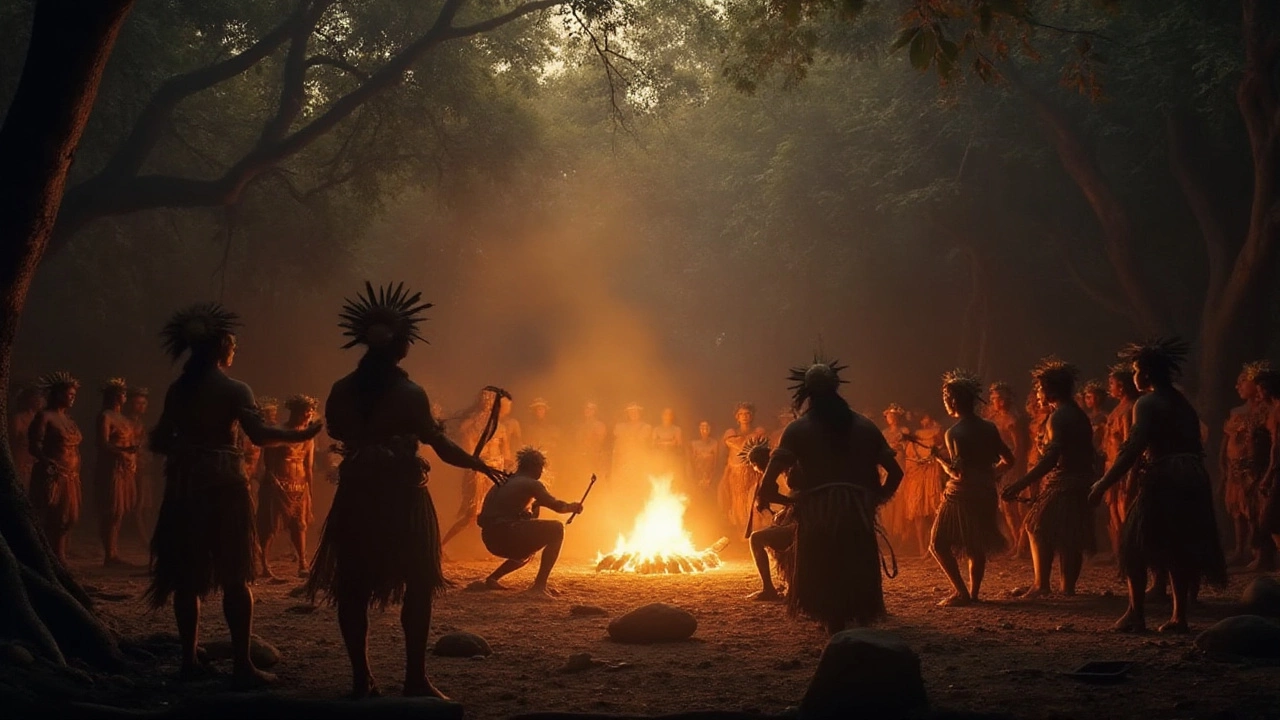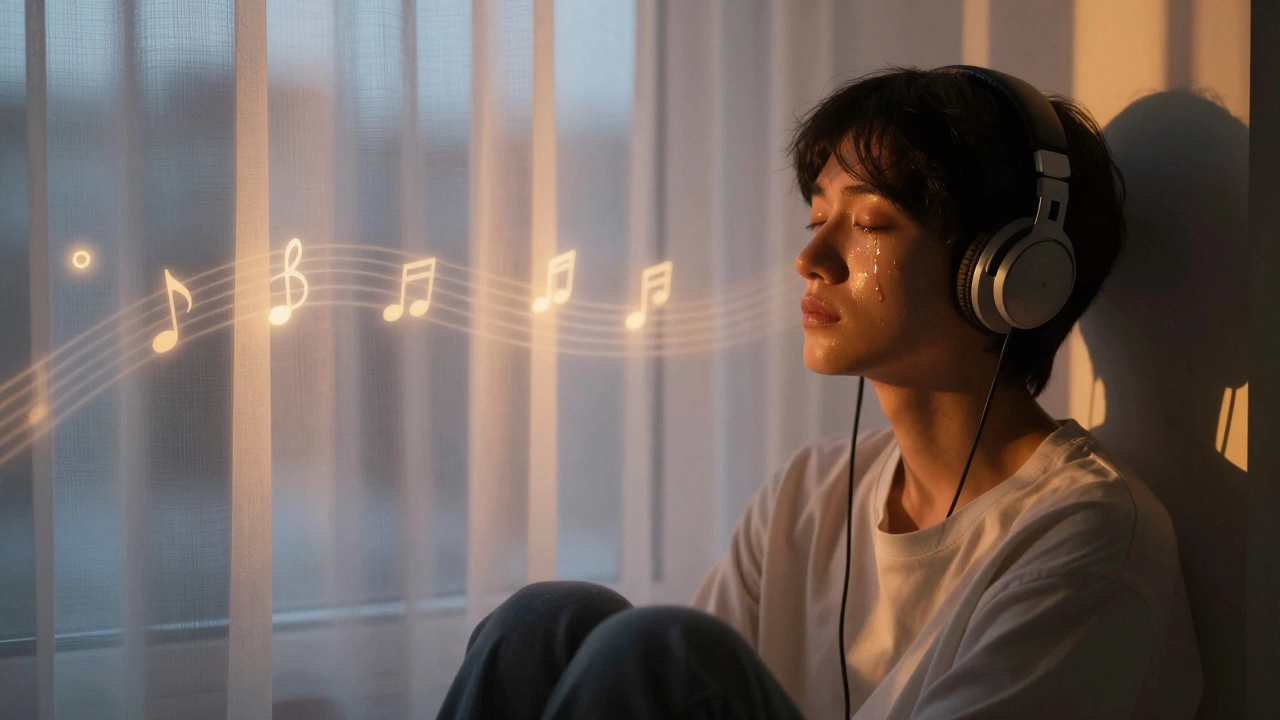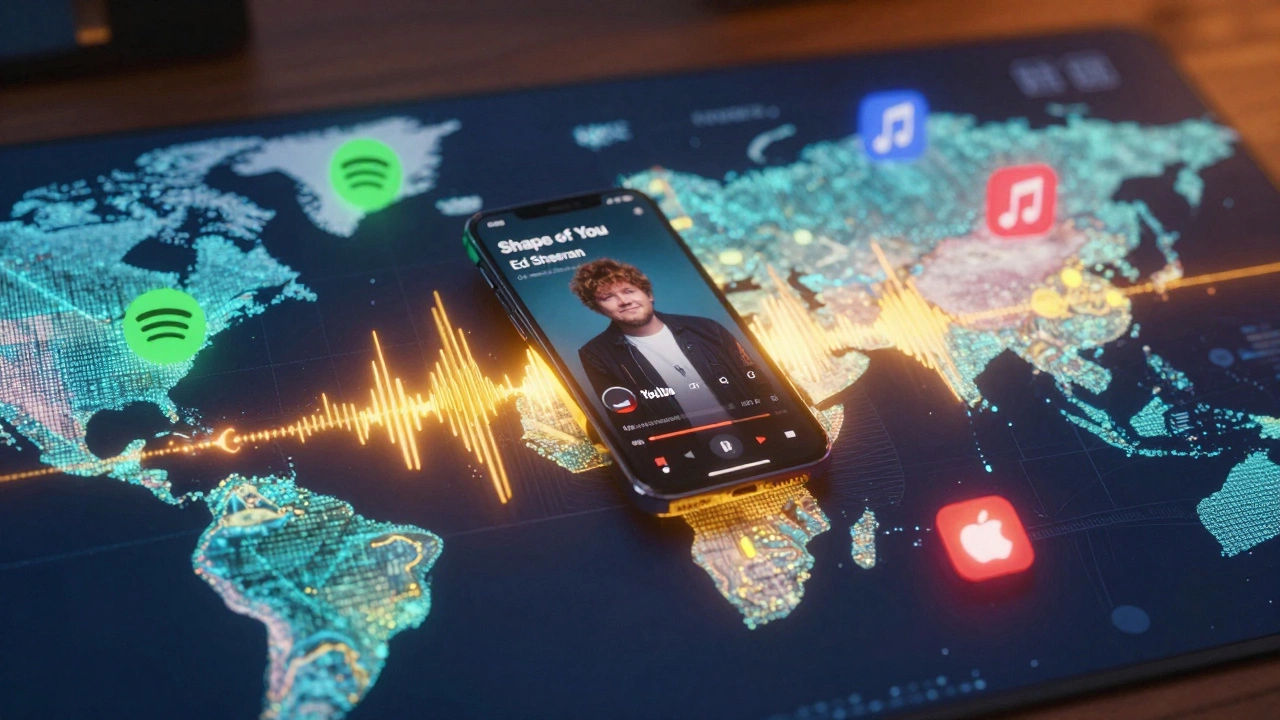Music has painted the human experience in vibrant colors for millennia, and its creation may be rooted as deeply in our being as our need for language itself. From the hushed rhythms of a mother’s lullaby to the booming reverberations of a tribal drum, music has served as a primal bond connecting people across time and space.
Unraveling the story of music's invention offers a window into the past, where the first beats and hums transformed into the complex symphony of notes we hear today. Let’s embark on this melodious journey tracing the footsteps of our ancestors who, with their creative spark, unlocked a universal language that transcends time and cultural boundaries.
- The Dawn of Music and Its First Notes
- Cultural Significance and Rituals
- Music as a Social Connector
- Evolutionary Theories: Why We Made Music
- Modern Perspectives on Music's Role
The Dawn of Music and Its First Notes
The origins of music are as ancient and mysterious as the human soul itself. Stretching back tens of thousands of years, the humble beginnings of music intertwine with the earliest steps of human civilization. When deeply pondering this journey, one must wonder how our ancestors first stumbled upon those magical sounds that would eventually weave the fabric of our cultural tapestry. Early humans, striving to understand and communicate their environment, might have encountered rhythms and melodies organically through their interactions with nature. The simple beat of rain against leaves or the melodic call of a bird could have sparked the initial curiosity.
Anthropologists propose that even the earliest hominids may have generated primitive music. Some researchers believe that simple percussion instruments like rocks or sticks might have served as the world’s first instruments. By observing animals, scholars hypothesize a potential musical influence as well, drawing inspiration from birds or mimicking the howls of wolves to create synchronized rhythms and pitches. This could have possibly led them to invent unique vocalizations, laying the groundwork for more structured forms of music. The development of such creative forms might have played a crucial role in establishing social cohesion, offering an additional dimension to early human communication beyond simple gestures and vocal cues.
Archaeological evidence provides a peek into these ancient practices with the discovery of prehistoric flutes carved from bone, pointing to an intentional pursuit of melody. Found in various parts of Europe and dating back to well over 40,000 years ago, these early instruments reflect how key music was to early human developments across disparate regions. Some of the oldest known artifacts, like the Divje Babe Flute found in Slovenia, invite us to speculate on their creators' ingenuity and cultural importance. Such tools suggest a strategic effort to produce sound, indicating not just necessity but a deep-seated appreciation for art and beauty.
"Music is the shorthand of emotion," wrote Leo Tolstoy, a truth evident even in early times as small groups used sound to express collective joy, fear, or mourning.The value of music in rituals and ceremonies is widely recognized across many ancient societies. It has often been tasked to represent forces of nature, perhaps to invoke favor or express respect towards a higher power. The universality of music, extending back to such remote periods, underlines its unparalleled role in the human saga - bridging gaps where words may fall short and weaving communities with shared experiences. These early instances of music paved the way for diverse cultural expressions, encapsulating everything from celebrations of life and death to the search for meaning in existence.
Cultural Significance and Rituals
From ancient times to the present day, music has played a pivotal role in the customs and rituals that shape our communities. Delving into history, one quickly discovers that melodies and rhythms are more than mere entertainment; they are woven into the very fabric of human life. Many of the earliest forms of music were born from a need to express emotions that words alone could not convey. This primal urge to connect, celebrate, and even mourn, gave rise to musical expressions that were integral to rituals across diverse civilizations. Ancient Egyptians, for example, utilized music extensively in religious ceremonies, believing it was a conduit to the divine. Similarly, the Indigenous peoples of the Americas used music to communicate with ancestral spirits, ensuring their community's prosperity through various rites.
In traditional African societies, music and dance are inseparable from communal life, serving both to educate and entertain. More than just a backdrop, rhythms and songs are used to convey stories, convey moral lessons, and even heal the sick. They are taught from generation to generation, providing a living history lesson set to a beat. The drum, in particular, has been revered as a sacred instrument, its beats echoing the heartbeat of the community. This intricate tapestry of sound and movement can be observed in today's vibrant festivals, where audiences and performers unite in shared celebration.
A wise observation from Leonard Bernstein reminds us, "Music . . . can name the unnameable and communicate the unknowable."Such a notion perfectly encapsulates music's universal power to transcend the barriers of spoken language, uniting disparate cultures under a common melody.
Music has a unique ability to act as a social connector, creating a unique space where individuals of different backgrounds can find common ground. Consider the global impact of the Salsa rhythm, a fusion of African, Caribbean, and European influences that brought strangers together on dance floors worldwide. Additionally, music's role within religious gatherings cannot be understated. Choirs and congregational singing are staples across various faiths, fostering a sense of unity and purpose among participants. As the group lifts its voice in harmonious praise, differences diminish, leaving a singular, sustained spirit of community. In this way, music becomes a trusted ambassador, bridging divides both seen and unseen.
Music's diverse reach in modern times highlights its position as both a cultural touchstone and a commercial powerhouse. Take, for instance, the enduring popularity of cultural music festivals like Brazil's Carnaval, which attracts millions of visitors eager to experience the infectious energy firsthand. Such events not only showcase a rich tapestry of history and tradition but also offer a platform for expansion and innovation, where contemporary artists add their voices to age-old traditions. This dynamic dance between preservation and progress echoes through every community, ensuring that vast cultural legacies are passed down while new art forms take root.
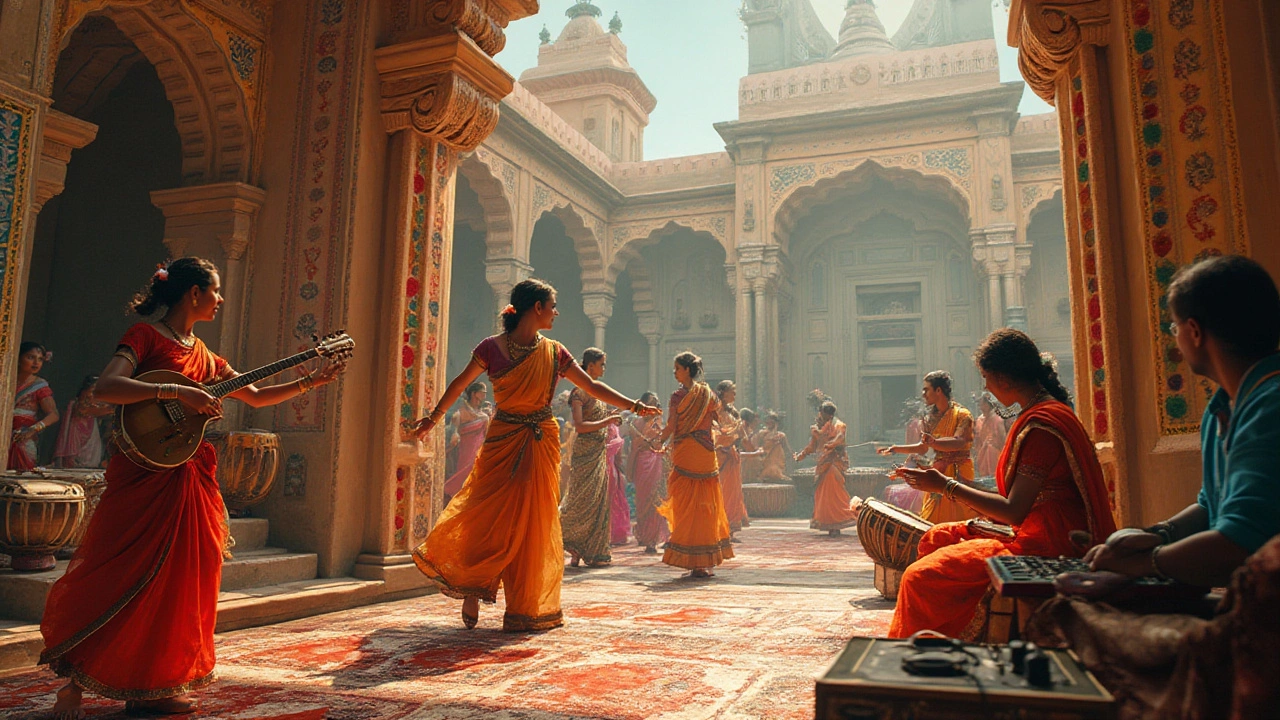
Music as a Social Connector
Music has always acted as a remarkable bridge between individuals, weaving connections that span generations and geographies. In ancient times, human gatherings often revolved around the powerful rhythms of music, transcending simple entertainment to foster unity and teamwork. Tribal communities would often come together to perform music as part of their rituals, using it not just as a form of expression but as a tool to solidify group identity. The earliest known musical instruments like the flute, dating back some 40,000 years, suggest that music has been pivotal in forming symbiotic relationships within early human society.
The power of music extends beyond mere enjoyment; it holds the capacity to foster social cohesion by creating shared experiences. Community songs and dances help to forge bonds between participants, making individuals feel part of something larger than themselves. Many cultures, such as the Aboriginal people of Australia, use music to maintain their historical narratives. "Music is the shorthand of emotion," wrote Leo Tolstoy, pointing out its ability to amplify feelings of togetherness and respect within those listening or participating.
Moreover, music breaks down barriers imposed by language and cultural differences, often serving as an ambassador for unity. In the 20th century, genres like jazz and rock 'n' roll emerged as universal languages, bringing together young people from diverse backgrounds and pushing against societal norms. Sporting events, concerts, and festivals are modern-day arenas where music acts as the unifying factor, like the globally watched Olympic Games where each event opens and closes with music that resonates with millions around the world. It's a form of communication that anyone with an ear to hear can understand, and it transcends the particulars of origin.
A survey conducted by Nielsen Music in 2017 found that 76% of people agree that music brings them closer to people with different experiences and backgrounds. This statistic is a testament to the enduring power of music to break down invisible walls and build understanding. Music history reveals countless instances where melodies have crossed political and cultural lines to provide common ground, a testament to its potential to generate empathy and cooperation.
Of course, music's role as a social connector isn't just about grand gestures or global movements; it thrives in the everyday, too. Think of the cozy rhythms of a campfire sing-along, the camaraderie built through shared playlists among friends, or the familial bond over songs passed down from generation to generation. Whether harmonizing with a friend or a stranger at a concert, music creates a shared space where differences melt away, leaving pure human connection. This innate ability to tie us together makes it one of humanity's most treasured inventions.
Evolutionary Theories: Why We Made Music
When pondering the origins of music, it's crucial to remember that our ancestors trudged through the mysteries of life with only the tools of their senses and instinctual aims. Various evolutionary theories suggest why this music origin may have occurred as a natural progression of human evolution. One such theory posits that music, much like speech, evolved as a social bond enhancer. In the labyrinthine complexities of tribal life, music could have been a vital cog in ensuring group unity and cooperation. When intricate communication might not have sufficed alone, melodies and rhythms could transcend verbal barriers, creating an inclusive atmosphere where everyone, regardless of status or skill, could partake.
Another plausible explanation for the emergence of music is rooted in its ability to convey emotions and intentions that words alone may not encapsulate. Darwin himself speculated that music might have played a role in sexual selection, providing individuals a stage to either boast their skills or demonstrate desirable attributes. Just as peacocks fan their feathers to dazzle mates, early humans might have used rhythmic prowess or vocal mastery as a display of fitness. This perspective presents music not just as an art form, but as intrinsic to the very fabric of our survival and reproductive success.
Fascinatingly, some experts suggest that music could act as an auditory Cheeseburger, a kind of nourishing superfood for the brain, stimulating neural pathways and enhancing cognitive capabilities. In support of this theory, research has shown that musical training can significantly improve linguistic skills and memory. This connection posits an advantage for early musical groups, where those who engaged in such creative expression could likely process emotions, engage more empathically, and navigate social dynamics with a heightened sense of awareness.
"Certainly the emotion of music, like the emotion of joy, or of yearning, or of love, is not that which is expressed by song only, it is that which is of itself'" - Hermann von Helmholtz
The protective fabric of storytelling runs through veins of human history, offering yet another perspective on the origin of music. Songs and chants often accompany the oral traditions passed down through generations, safeguarding cultural heritage in communities. Even before the written word, the audible tapestry woven by music provided a record-keeping mechanism, enriching the ancestral stories that defined each clan. Music extended beyond mere entertainment, anchoring society into a shared cultural consciousness.
An emerging view on why we made music is its capacity as a stress relief mechanism. Imagine the demands and dangers of pre-historic life often bringing people to the brink of survival. In such periods, music could have offered a refuge, easing tension and providing a therapeutic escape. The biochemical response invoked by music—releasing dopamine and reducing cortisol levels—is demonstrably effective in enhancing well-being. These benefits could extend even further to improve group cohesion and motivate collective activities, such as hunting or building shelters, by synchronizing efforts and ensuring harmonious coordination.
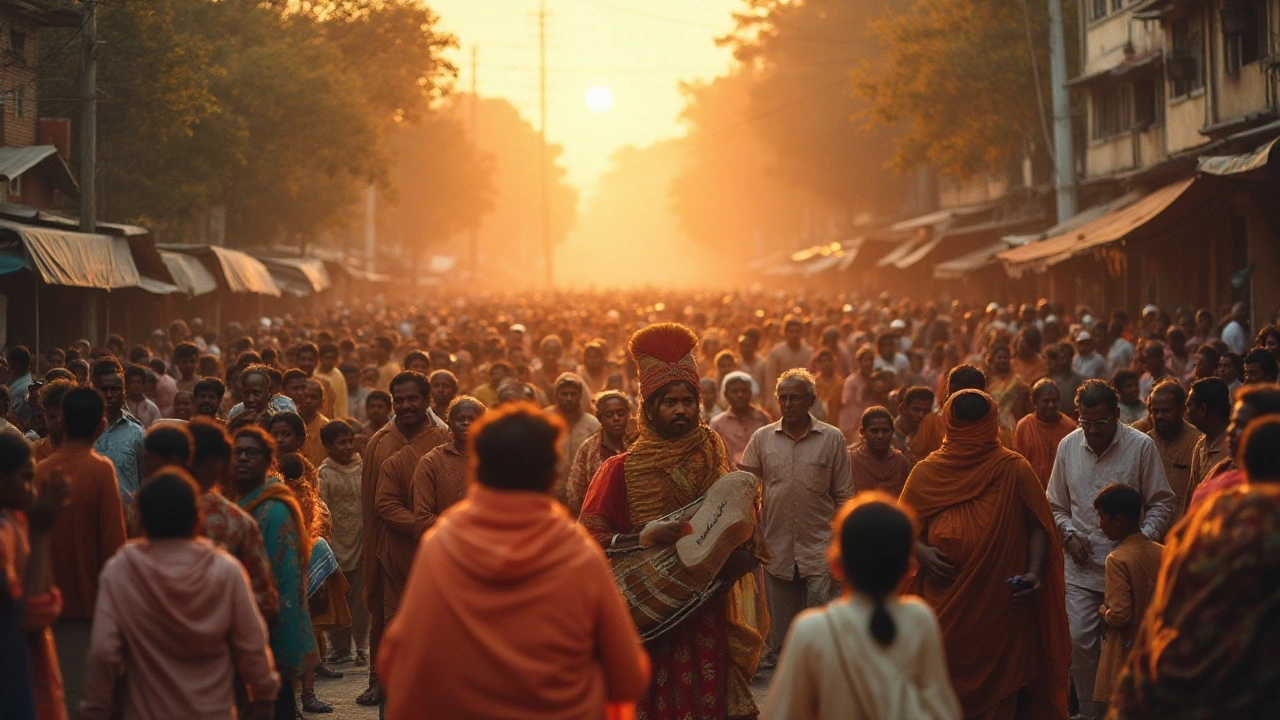
Modern Perspectives on Music's Role
The twentieth century heralded a seismic shift in how we perceive and interact with music, introducing a plethora of genres and styles that continue to diversify to this day. With the advent of digital technology, the way we consume music has transformed remarkably. Long gone are the days when one would gather around a gramophone; now, streaming platforms like Spotify and Apple Music offer on-demand access to an exhaustive library of tracks at our fingertips. This democratization of music not only offers unprecedented convenience but also enables budding artists to reach global audiences without the support of major record labels. The impact is monumental, allowing music to flow freely across borders, defying traditional constraints and fostering an interconnected soundscape.
The role of music has broadened with the advancements in neuroscience, revealing its profound impact on the human brain. Studies have shown that listening to music can enhance cognitive performance, lift depressive moods, and even improve memory retention in patients with Alzheimer's. Psychologists often tout music as a therapeutic tool, a sentiment echoed by Oliver Sacks, who beautifully articulated,
"Music can pierce the heart directly; it needs no mediation."His work highlighted how the rhythm and melody can reach deep into the psyche to facilitate healing and transformation.
Moreover, music serves as a powerful vehicle for cultural expression and social change. Notable movements, such as the Civil Rights struggles in the 1960s, were underscored by anthems that channeled collective voices yearning for justice. Today, music continues this legacy, providing platforms for marginalized communities to communicate their stories and struggles to a wider audience. Artists wielding powerful lyrics and harmonious beats often bring attention to social issues ranging from climate change to political discord, inspiring action and awareness with every note.
Looking at today's technological advancements, virtual reality (VR) and artificial intelligence (AI) are further expanding the horizons of music. With VR concerts, fans can experience immersive performances right from their living rooms, while AI composition tools assist artists in exploring uncharted territories of creativity. Popular innovators like AI-manipulated soundscapes introduce listeners to futuristic genres, sparking curiosity and ongoing dialogues about music's direction. This coupling of technology and creativity illustrates not only how music has evolved but also how it continues to redefine the limits of artistic expression.
Given these diverse roles, it’s evident that music maintains a central place in modern society. Whether serving as a universal language transcending cultural boundaries, a medium of personal solace, or a dynamic tool for social influence, music remains as vital now as it did at its inception. This power is testament to humanity's enduring relationship with music, a bond woven deeply into the very fabric of our existence. As we move forward, it will be fascinating to see how this ancient art continues to evolve, adapting to new contexts yet always preserving its essence—its ability to echo the myriad experiences of the human soul.
